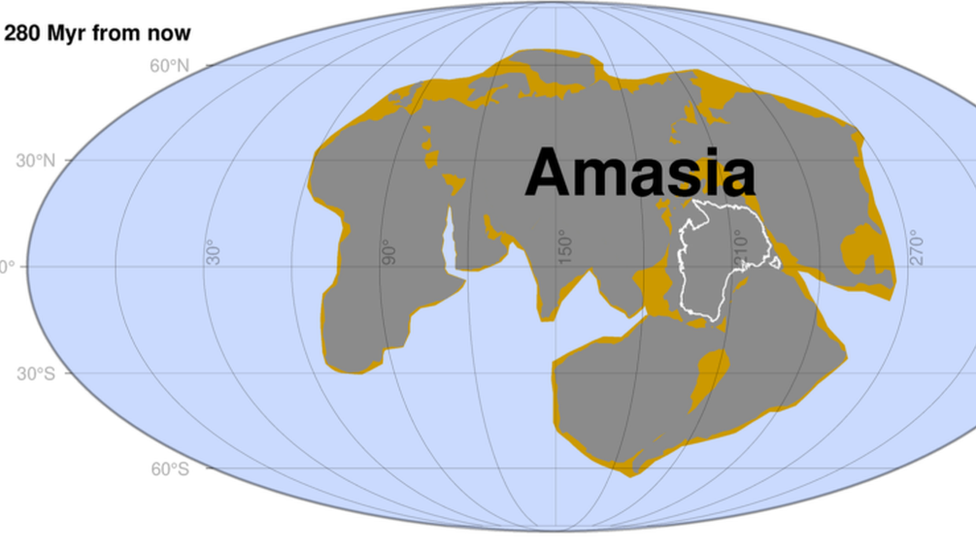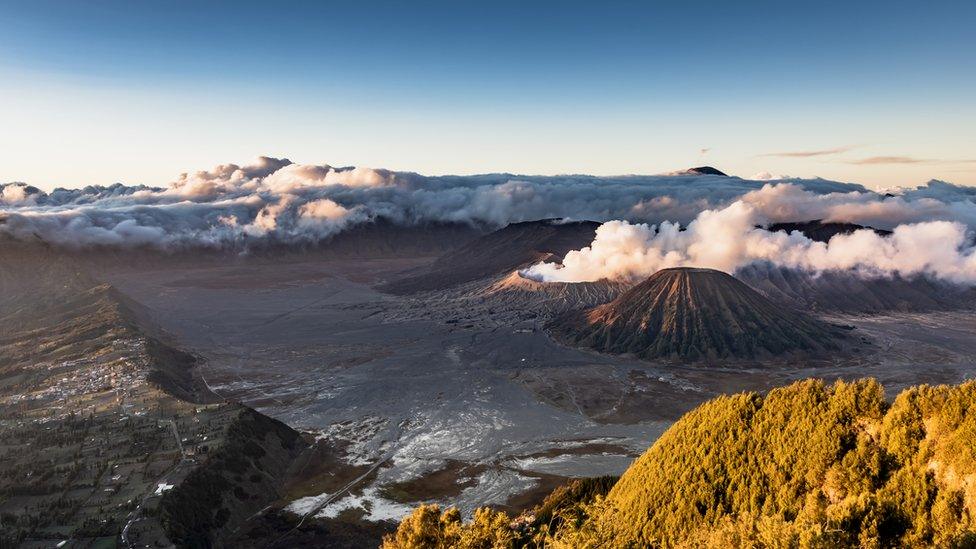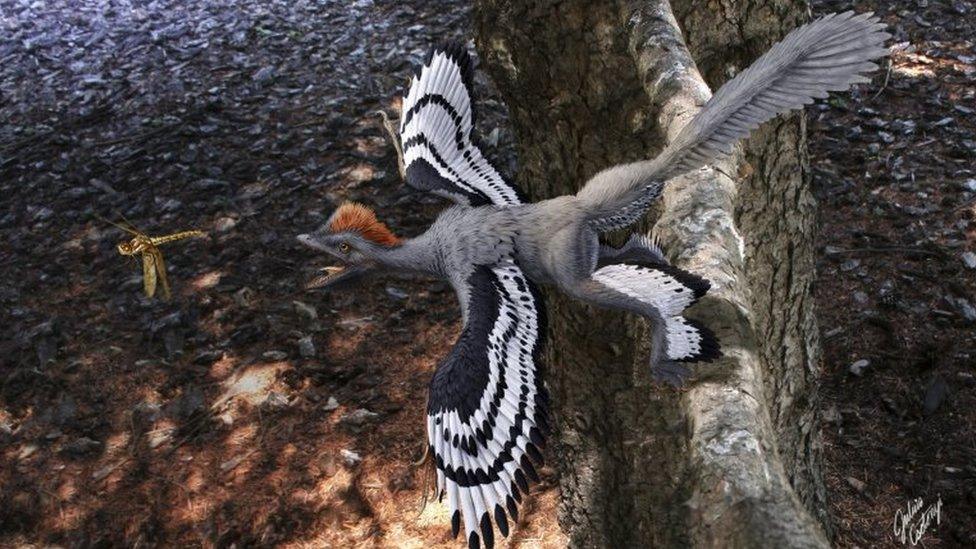Supercontinent Amasia to form (but not for 200 million years), say scientists
- Published
- comments

One version of what Amasia might look like
The world's next supercontinent, which is being called Amasia, is likely to form in 200 to 300 million years when the Pacific Ocean closes in, say scientists.
Amasia would be formed of America, Asia and Australia as the continents collide and connect together according to the new research.
Computer simulations show that the new supercontinent would form around 250 million years in the future.
And geologists say that when it happens, the Pacific Ocean will no longer exist.

Land on Earth is made up of gigantic land masses, called continents.
The seven continents are Asia, Africa, North America, South America, Antarctica, Europe and Australia.
Millions of years ago, when dinosaurs were still around, most of Earth's land made up a supercontinent called Pangea.
The Earth's surface is made up of large slabs called tectonic plates which fit together like a jigsaw puzzle.
Floating above softer rock called a mantle, the slabs move very slowly over time.

What Pangea may have looked like millions of years ago
Over millions of years the movement of tectonic plates broke Pangea up into the continents we know today, but the plates are still moving.
The Australasian plate is one of the faster moving ones, going northwards at around 7cm a year.
But according to geologists the Pacific Ocean could disappear as tectonic plates collide and overlap.
When the plates rub together, the movement forces waves of energy to come to the Earth's surface.
The Big Question: Why do volcanoes actually erupt?
Known as the Pacific Ocean's ring of fire these movements are revealed by frequent volcanos and earthquakes as the plates bump into each other.
Each year, a few cm of the Pacific plate goes under the Eurasian plate and the Indo-Australian plate, bringing America, Asia and Australia closer together.

The volcano mount Bromo in Indonesia is part of the 'ring of fire'
According to research published in the journal National Science Review, the Pacific Ocean will eventually disappear, which is unlike previous studies which have suggested Atlantic Ocean or Caribbean Sea could disappear.
Using a supercomputer, geologists from Curtin University in Perth, were able to work out what future supercontinents would look like.
The Pacific Ocean is the oldest ocean on Earth. It is currently shrinking in size by a few centimetres per year and scientists believe it will take two to three hundred million years to close.
"Over the past two billion years, Earth's continents have collided together to form a supercontinent every 600 million years, known as the supercontinent cycle.
"This means that the current continents are due to come together again in a couple of hundred of million years' time," lead author Dr Huang said.
"The resulting new supercontinent has already been named Amasia because some believe that the Pacific Ocean will close when America collides with Asia.
"Australia is also expected to play a role in this important Earth event, first colliding with Asia and then connecting America and Asia once the Pacific Ocean closes."
- Published5 July 2022

- Published1 May 2024

